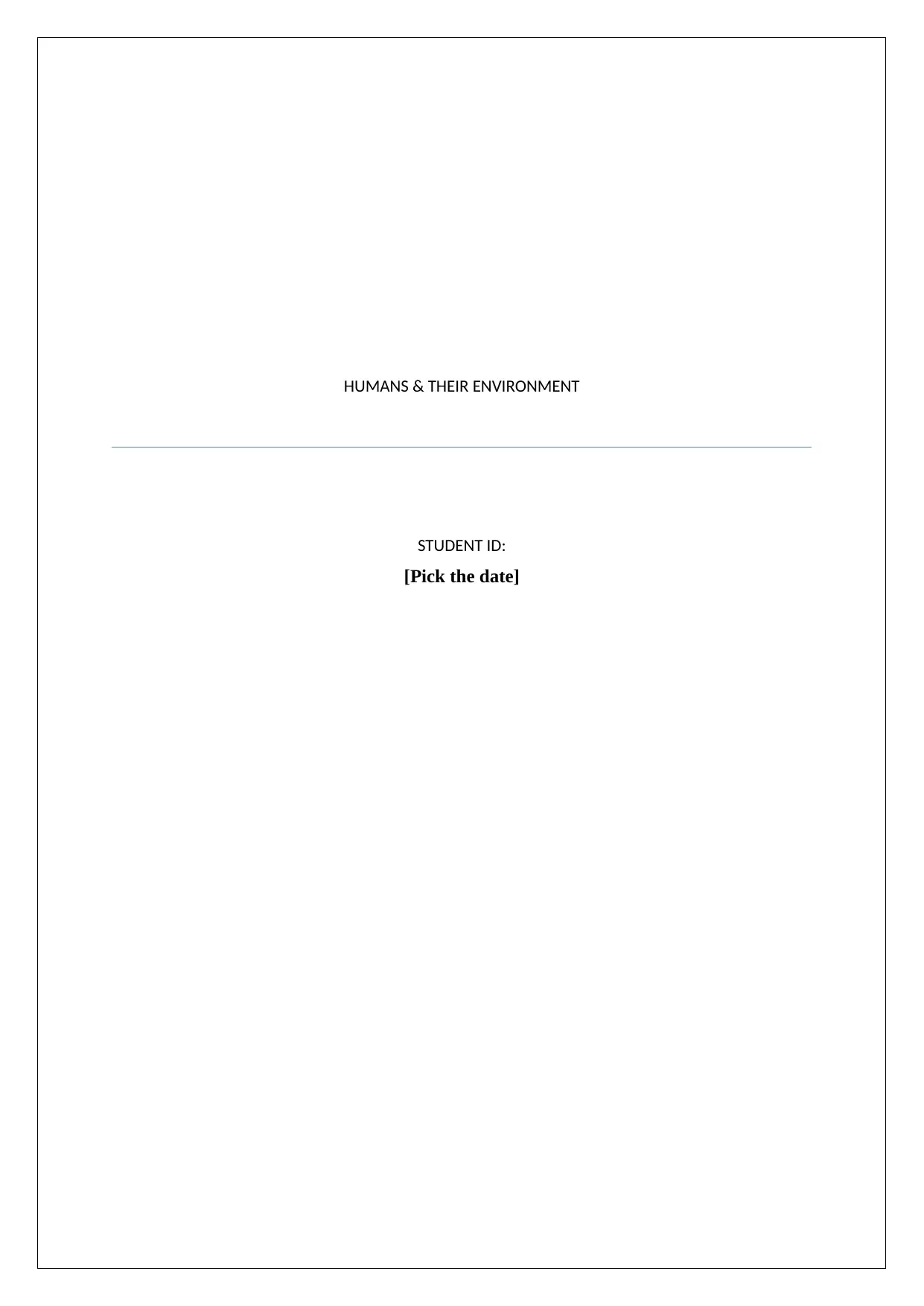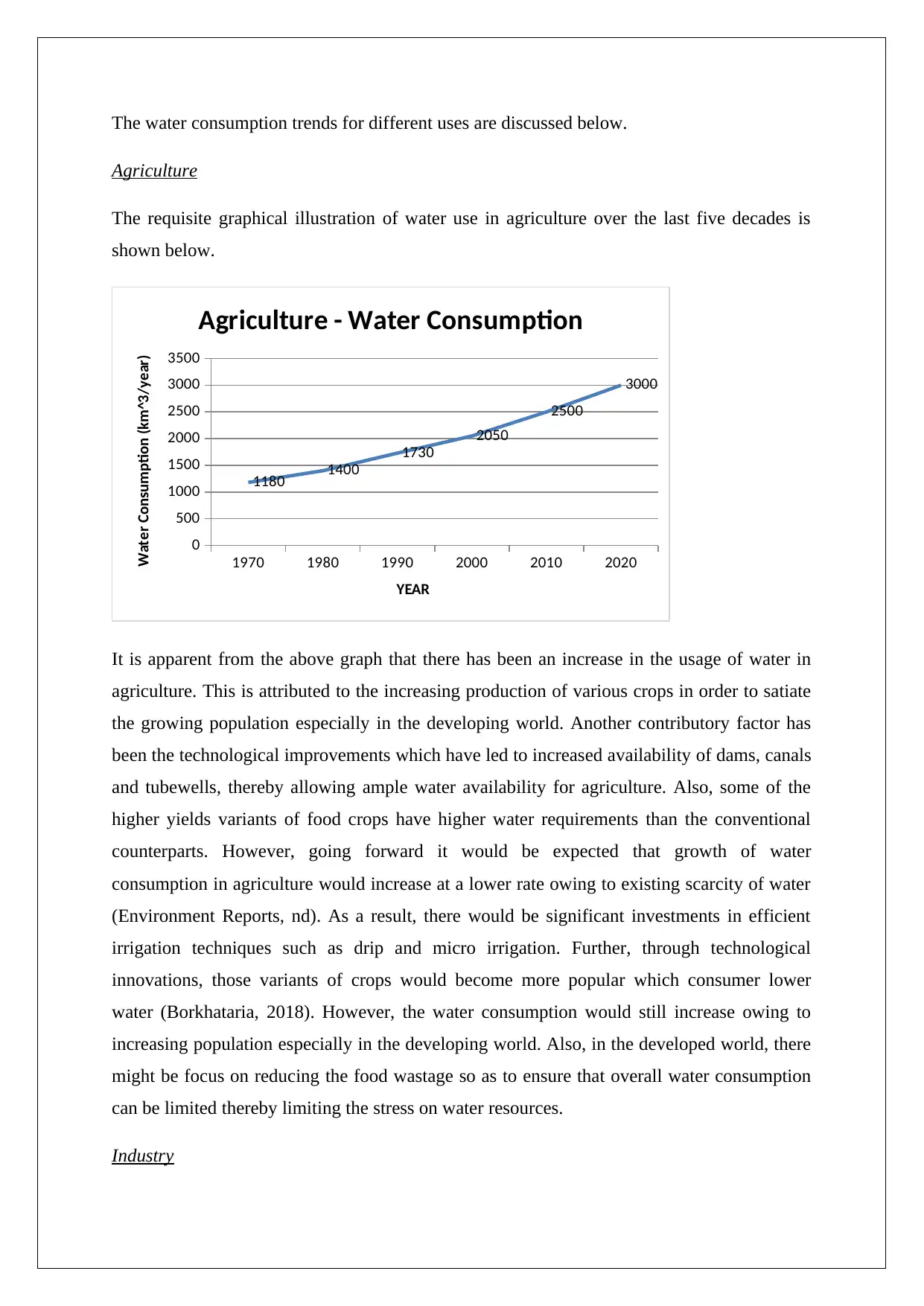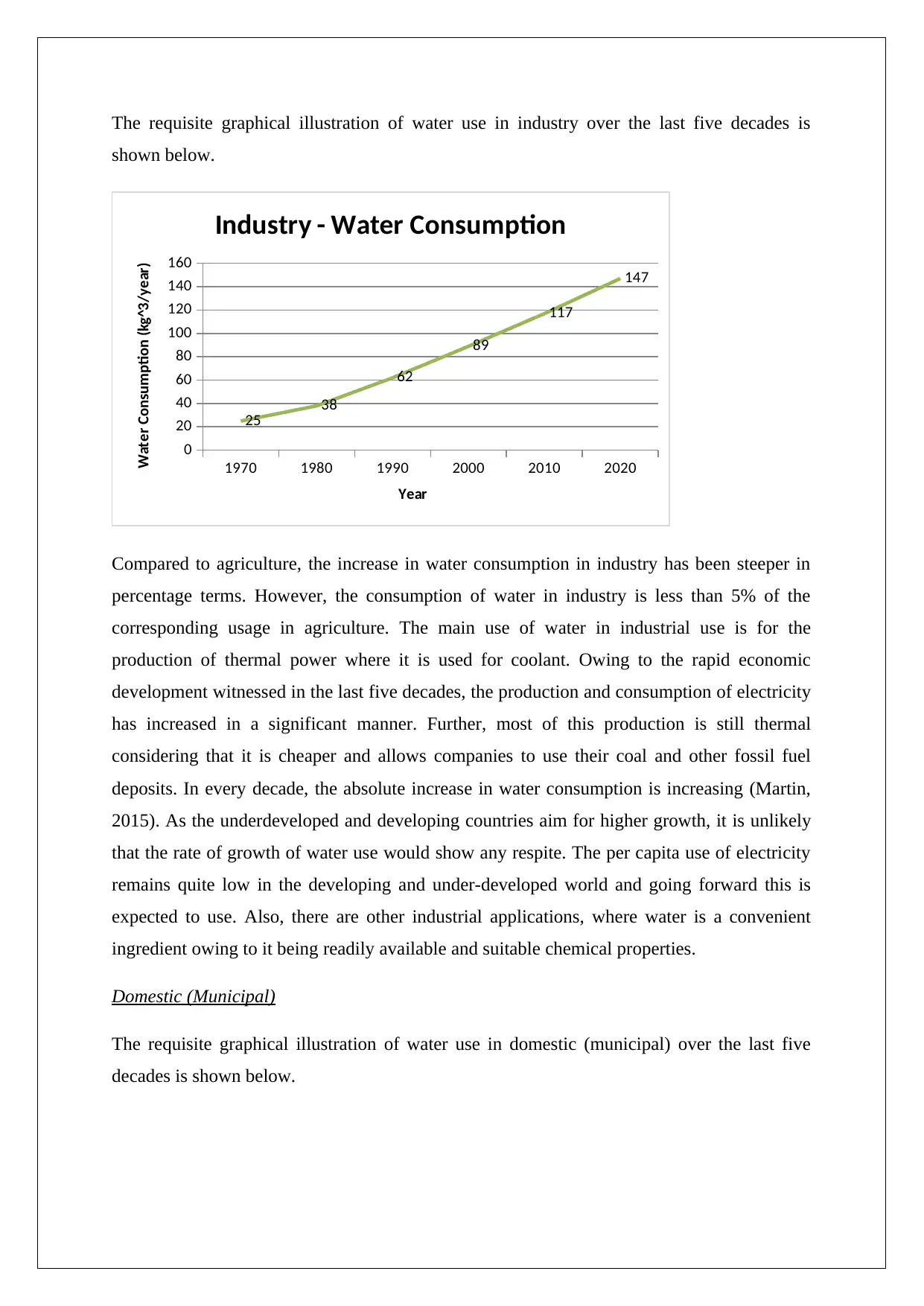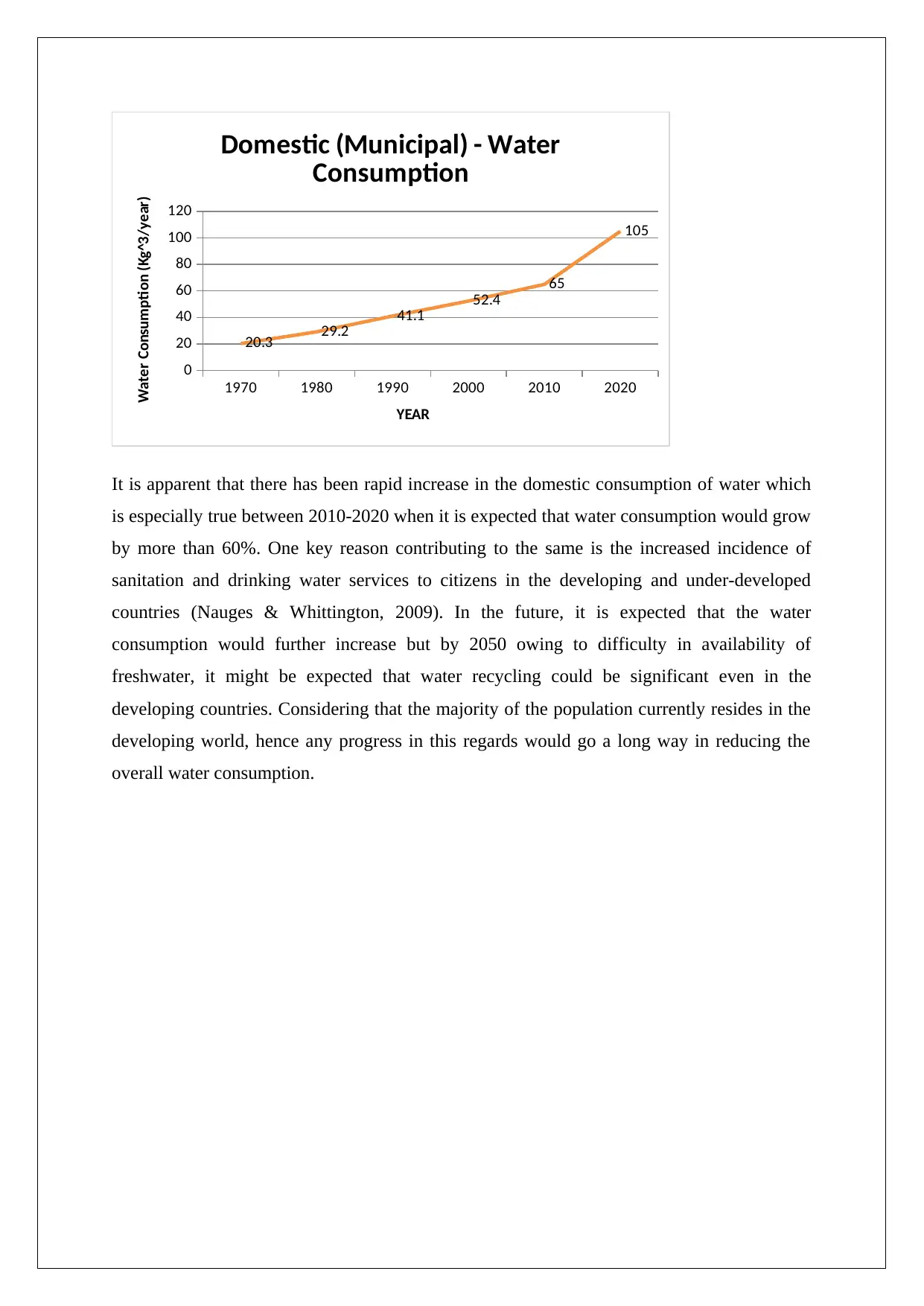CLS 120 Humans & Environment: Analyzing Global Water Use Trends
VerifiedAdded on 2023/05/30
|5
|856
|452
Homework Assignment
AI Summary
This assignment provides an analysis of water consumption trends across three main sectors: agriculture, industry, and domestic (municipal) use, spanning from 1970 to 2020. It examines the increasing water usage in agriculture due to factors like population growth, technological advancements in irrigation, and the cultivation of water-intensive crop varieties. The industrial sector shows a steeper percentage increase in water consumption, primarily driven by thermal power generation and overall economic development. Domestic water consumption has also risen sharply, particularly in developing countries, due to improved sanitation and drinking water services. The analysis further speculates on future water use trends, anticipating a slower growth rate in agriculture due to water scarcity and the adoption of efficient irrigation techniques, while industrial water use is expected to continue increasing with economic development. Domestic water consumption is projected to rise further, but with potential for significant water recycling by 2050, especially in developing countries. The assignment references several sources to support its findings and projections.
1 out of 5









![[object Object]](/_next/static/media/star-bottom.7253800d.svg)